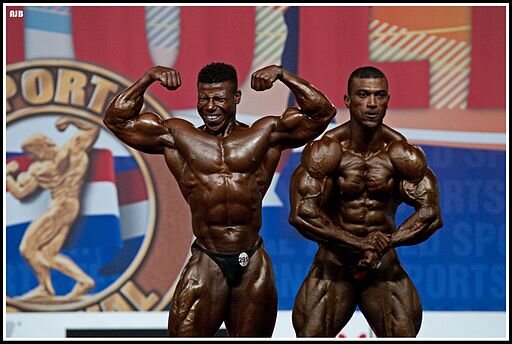Group of young people enjoying a day at the beach, Gold Coast (3840595033).jpg
State Library of Queensland, Australia, No restrictions, via Wikimedia Commons
Deborah Tosline wrote and published “Skin Remodeling DIY: An Introduction to the Underground World of Do-It-Yourself Skincare” in 2015. Her approach to skin care is based on a scientific background, love of research and over 30 years of DIY skincare experience.
Follow Skin Remodeling DIY on Facebook for weekly messages on health and beauty.
Throughout time, humans have altered their physical appearance to attract others and gain respect and status. It’s human nature. Surprisingly, women and men from within and across cultures agree on basic physical attractiveness. Even infants look longer at faces deemed attractive by adults. Attractiveness may be “hard-wired” in our genetics.
Ancient Greece Marble Statue (28392930452).jpg, Gary Todd from Xinzheng, China, CC0, via Wikimedia Commons
Judgements about beauty, appearance and reproductive fitness are primarily based on: health perception, symmetry, average features, face proportions, body proportions, foot size, facial color and wrinkles.
It’s normal for humans to assess attractiveness in others and enhance our own appearance. There are no absolutes, so of course it’s situational. Fundamentally, humans seek status, respect and deference from others and this fuels our desire to optimize our appearance.
On a basic level enhancing one’s appearance is as simple as getting a haircut, staying in good physical and mental health, practicing good dental and personal hygiene and wearing clean clothes and shoes.
Did you know that our bodies, like our brains, are plastic and can be molded or changed, to a degree, using natural or “soft”, non-invasive remodeling practices. One can also make drastic changes to their appearance using “hard” or invasive remodeling protocols like surgery.
The Merriam-Webster Dictionary defines remodeling as: “to alter the structure; to cause living tissue to undergo structural reorganization, alteration, or renewal.”
File:Fingers playing guitar.jpg, Vincent Lock from Houston, United States, CC BY 2.0 <https://creativecommons.org/licenses/by/2.0>, via Wikimedia Commons
Learning to play the guitar provides a good example of skin remodeling. When one practices the guitar, they press either metal or nylon guitar strings down with their fingertips to make a note or chord. At first, holding the guitar strings for long periods of time may result in sore and tender fingertips. With consistent guitar practice, the skin of the fingertips thickens, strengthens, and develops callouses to enable the skin to tolerate the roughness of the guitar strings. This is skin remodeling.
The remodeling concept may be applied to everything. You, your brain and your body are more powerful than you may understand. You can change yourself. Do you wish that you had better posture? You can change it. It may be painful and uncomfortable along the way but with knowledge, dedication, and consistency, over time the correction is possible and will be worth the effort. Want a better brain? Exercise to remodel the brain.
3D medical animation skin layers.jpg, https://www.scientificanimations.com/, CC BY-SA 4.0 <https://creativecommons.org/licenses/by-sa/4.0>, via Wikimedia Commons
I began to pursue consistent skin remodeling about 40 years ago, in my twenties when I used kitchen facial masks made of plain yogurt, honey, or avocado on Saturdays while I cleaned or studied. A one-hour yogurt mask would transition into a one-hour honey mask finished by a one-hour avocado mask. If you can tolerate it and apparently I can, strong skin care practices can change the appearance of the skin. Over time, I evolved into using advanced Do-It-Yourself (DIY) skin care treatments.
I began facial remodeling in about 2002 when I began to practice Deborah Crawley’s FlexEffect FacialBuilding Program™ (not affiliated) which provides instructions for facial resistance training exercises to strengthen and enlarge facial muscles. Facial massage stimulates skin and also allows one to feel facial muscle changes over time. It was during facial massage that I noticed that my facial musculature had improved from facial resistance exercise.
Over the years, DIY face and skin remodeling became an inexpensive and effective graceful aging practice and a relaxing hobby.
Women have practiced soft facial tissue and skin remodeling throughout modern times by using serums, lotions, creams, acids, facial exercise and massage, facial lymphatic massage, facial treatments with tools, devices and machines and more recently injections and fillers.
Men practice Looksmaxxing and skinmaxxing which involve similar activities to enhance physical appearance over time.
Body building two.jpg, ablight, CC BY 2.0 <https://creativecommons.org/licenses/by/2.0>, via Wikimedia Commons
Looksmaxxing includes anything from basic grooming to soft body sculpting and face sculpting using facial exercise, mewing, bone smashing and hard sculpting with surgery. Skinmaxxing addresses common skin issues including acne, scars, and clear skin. Looksmaxxing is the process of enhancing ones appearance and is popular with young men. When I recently discovered Looksmaxxing, I was thrilled. I had begun to integrate skull shaping practices into my routine and my DIY skin peers were not discussing the topic, but the Looksmaxxers’ were.
A few years ago, I chose to remodel my forehead to minimize an indentation in between my eyebrows from decades of furrowing my brow when I read, think, work, decide, whatever. I consistently and strongly used a massage tool on my forehead and followed the Wrinkle Rubout Method by Sanford Bennett.
This practice increased the skin tissue resulting in a kind of un-detectable callous that developed on my forehead and diminished the appearance of the line. Check out my results in this article.
I became convinced that I could remodel my skin if I put my mind to it and had the time.
One evening I fainted (salt imbalance), hit the corner of two walls with my head, fell to the floor and acquired a scar that runs down the middle of my forehead from my hairline to my eyebrows. I am currently remodeling the scar. Read about how I healed my scar here.
I’ve progressively continued to use more powerful DIY treatments over time. Today, at 62, I continue to practice facial and skin remodeling and experience what I believe are effective results. My primary goal is to promote healthy facial skin, muscles, and bones. Good health = beauty.
I did not think much about facial bone atrophy until Deborah Crawley published the 3rd edition of the FlexEffect FacialBuilding Program™. She showed the progress of natural facial bone loss over time and identified exercises to help maintain and strengthen facial bones referred to as Jolting™ and PressureReps™. These exercises pull on muscles where they are attached to bones which applies stress that promotes bone growth. This was the first time that I learned about facial bone loss. I was shocked but rarely remembered to do the easy peasy Jolting™ exercises. Jolting™ and PressureReps™ may be used to keep facial bones strong.
Over the years, my desire to release facial tension led me to research facial trigger point therapy. Releasing facial tension softens and remodels the appearance of the face and bonus, promotes a sense of calm. I wrote about it here.
There is not enough time in the day.
As I researched facial trigger point and facial structure, I came across mewing. Mewing was recognized by Dr. John Mew an orthodontist. Over history, the tongue lost its natural placement due to bottle feeding and other factors. Natural tongue placement is against the upper palette or roof of the mouth. During mewing, the tongue remains on and pushes against the roof of the mouth during swallowing and nose breathing. Mewing promotes health benefits including maintaining upper palette width and straight teeth, supporting the mid-face bony structure, better chin and nose alignment and a more-defined jawline.
I began mewing immediately.
Mewing represents our natural tongue placement. Within a week mewing became a subconscious practice. I’ve been mewing for a couple of years now. I do believe that my upper palette is wider but I have not taken special photos and measurements. Mewing is comfortable to me. I unconsciously practice it day and night and believe it supports my mid-face structure. I was thrilled when I began to practice mewing, however when I asked other folks about it, they didn’t know what I was talking about. Looksmaxxing folks utilize mewing, read their mewing guidance here.
https://jakabstore.com/blog/mewing-the-secret-to-beautiful-face-and-straight-teeth/
I once again found myself reading about facial bone loss over time. Natural facial bone loss is devastating to our facial architecture. No cream will prevent facial wrinkles associated with facial bone loss. Facial wrinkles are directly associated with bone loss and loss of the architectural support beneath the skin. For example, over time the eye socket becomes larger and no longer supports the overlying skin resulting in eye wrinkles.
Throughout life, our bodies constantly create new bone and existing bone is reabsorbed. Bone loss occurs when more bone is reabsorbed than is created. It is vital to maintain good health to support the bone creation process.
https://www.flexeffect.com/bone-remodeling/
German surgeon and anatomist Julius Wolff developed Wolff’s Law in the 19th century which states that bones that are exposed to external loads will adapt to the load and grow thicker in a healthy individual.
Lookmaxxers use Wolff’s law to modify their facial bone structure and enhance their appearance.
Bone smashing is a technique used by Lookmaxxers to create new bone to enhance facial structure. It involves gently striking strong facial bones to apply a stress to the bone and initiate the bone creation process. Learn about the bone smashing method here.
Indigenous Swiss on YouTube demonstrates the Bone Smashing technique, although he no longer uses the method. This method is used to stress the bone sufficiently to encourage new bone growth to modify and enhance the existing bone including the chin, jaw, and cheekbones.
At this time, I seek to regain facial bone loss and prevent future bone loss using a combination of FlexEffect bone remodeling and gentle Bone Smashing (I call it Bone Tapping) in an attempt to promote facial bone growth.
In the meantime, I believe that DIY Facial Remodelers and Lookmaxxer’s may learn from one another and augment our knowledge about face and skin remodeling practices. Welcome all!
If you need more information, go to the library, search the Internet, read my past Blog articles, or get my book “Skin Remodeling DIY: An Introduction to the Underground World of Do-It-Yourself Skincare”
Take good care of yourselves!
XO Deborah
This article is intended to be used as general information only and is in no way intended to replace medical advice, be used as a medical treatment program, diagnosis, or cure of any disease or medical condition. There are no warranties, expressed or implied, regarding the effectiveness of the practices described in this article. Products or substances discussed herein are for educational purposes only and are not intended as recommendations of the author.







